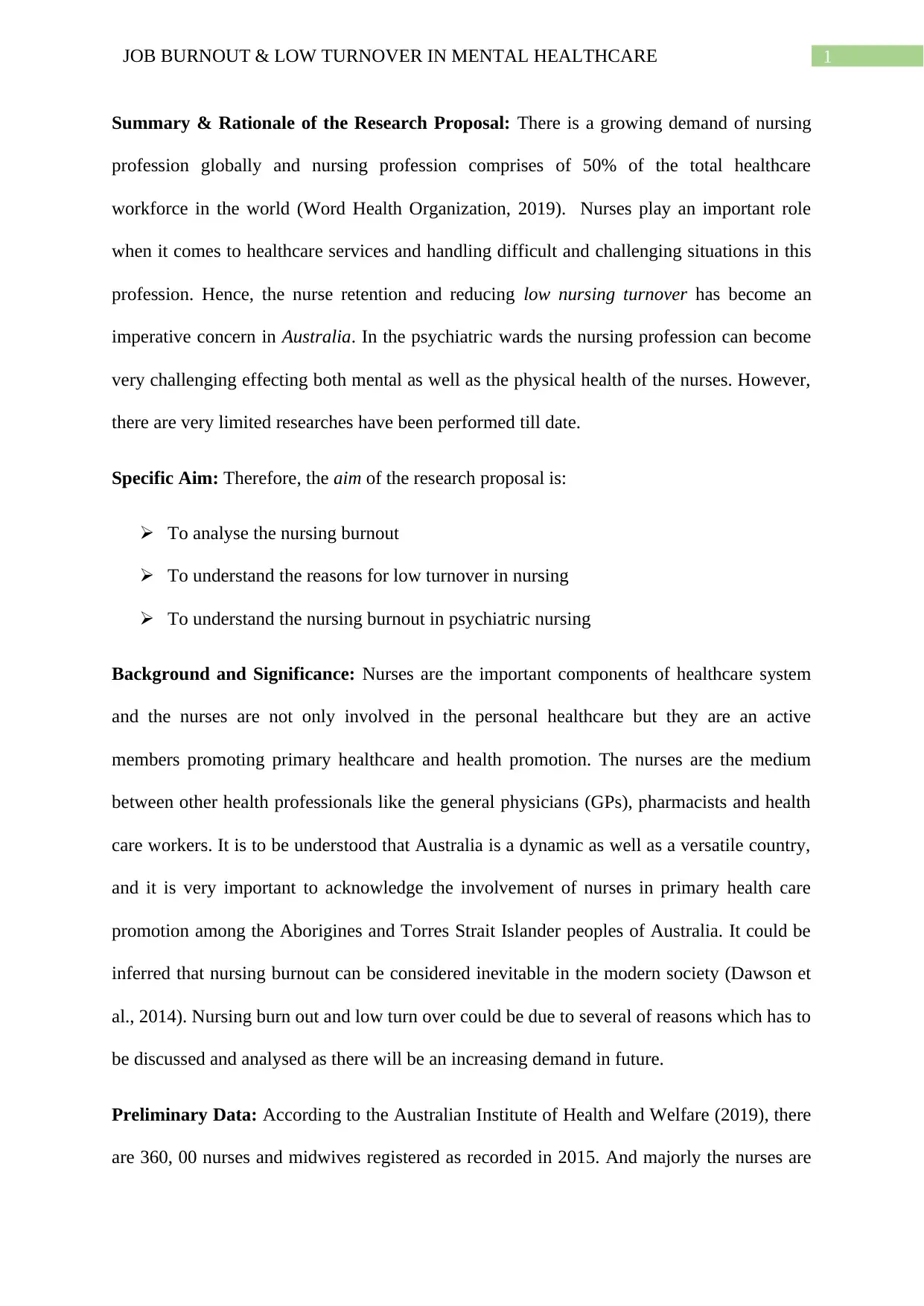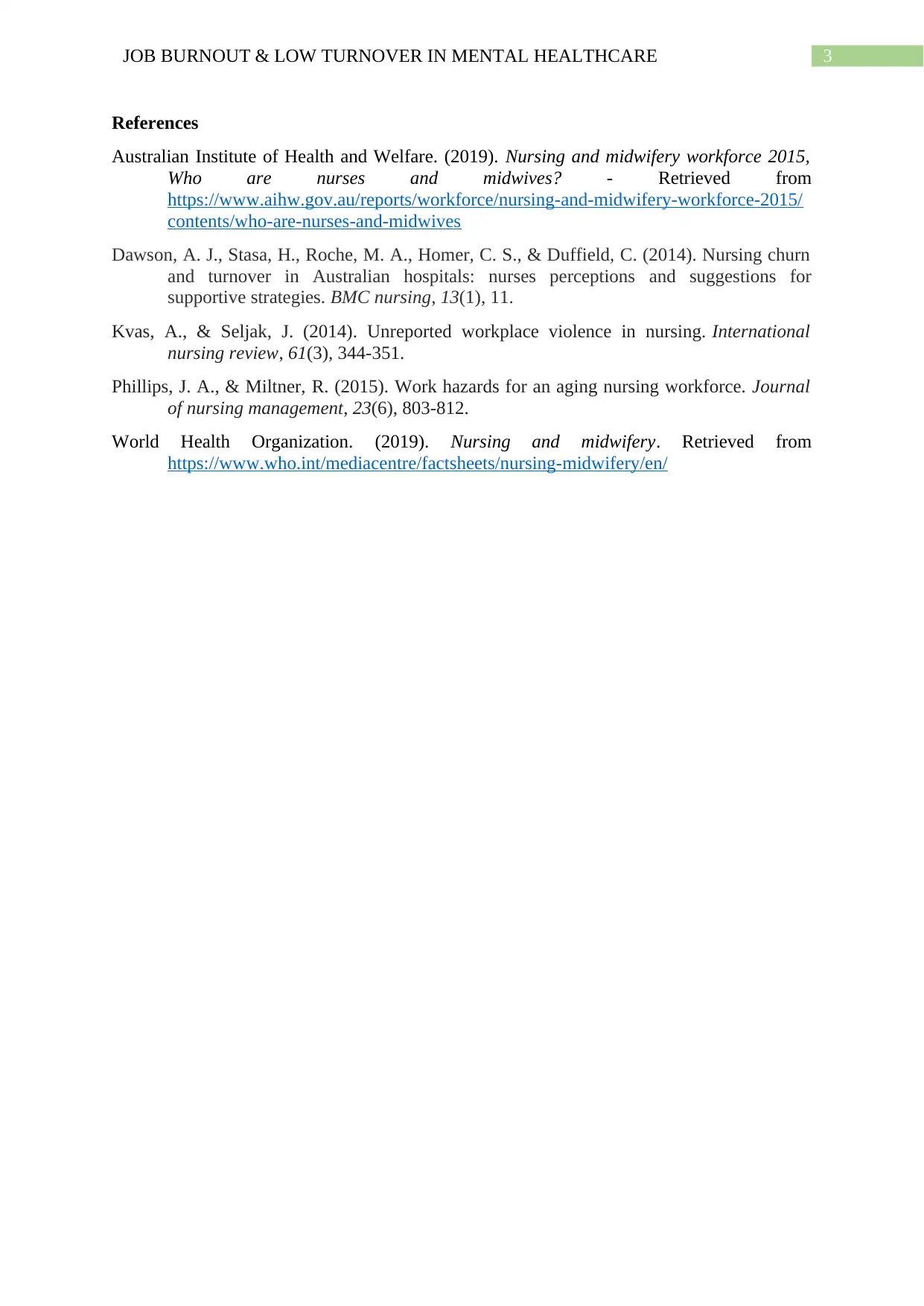Research Proposal: Job Burnout & Low Turnover in Mental Healthcare
VerifiedAdded on 2023/04/25
|4
|786
|399
Report
AI Summary
This report examines nursing burnout and low turnover within mental healthcare, particularly in psychiatric settings. It highlights the increasing global demand for nurses and the challenges they face, impacting both mental and physical well-being. The research aims to analyze nursing burnout, understand the reasons for low turnover, and specifically investigate burnout in psychiatric nursing. Preliminary data indicates a predominantly female nursing workforce, with a significant portion over 50, facing potential workplace violence and hazards. The study employs descriptive, analytical, and explanatory methods, utilizing primary and secondary data through surveys and interviews, with data presented in charts, graphs, and qualitative analysis. The report references key sources, including the Australian Institute of Health and Welfare and the World Health Organization, to support its findings. Desklib provides access to this and other solved assignments for students.
1 out of 4











![[object Object]](/_next/static/media/star-bottom.7253800d.svg)